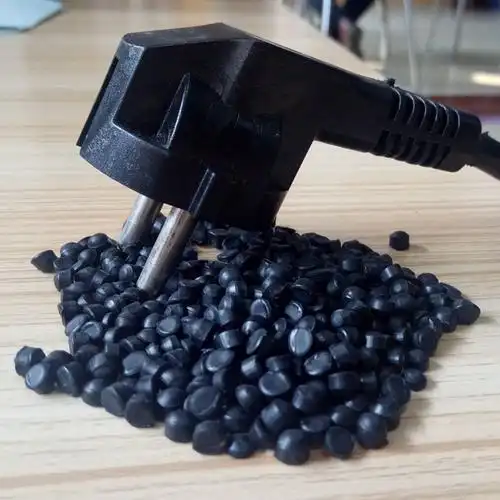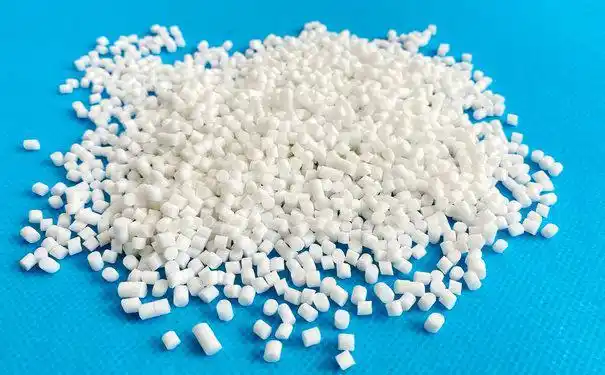Having spent over a decade in polymer processing and formulation — tinkering with everything from medical-grade TPE to highly engineered automotive elastomers — I’ve encountered countless cases where customers come to me, baffled by why their supposedly “brightened” TPE ends up with an unsightly yellow hue over time.
At first glance, it seems ironic. You add an optical brightener (also known as a fluorescent whitening agent, or FWA) specifically to make your TPE look whiter, cleaner, and more vibrant. Instead, after a few weeks or months, you see an unpleasant yellowish tint creeping in.
So what’s going on here? Let me break it down from the ground up.

What’s really happening — the mechanism behind yellowing
Optical brighteners work by absorbing UV light and emitting blue light, which counteracts natural yellowish shades in polymers, making them appear “whiter.”
However, the combination of TPE’s chemistry and environmental factors often causes these brighteners to degrade, lose their fluorescence, or even undergo chemical reactions that create yellow by-products. Here’s a simplified table summarizing the typical causes:
| Cause | How it impacts TPE + FWA | Result |
|---|---|---|
| UV exposure | Breaks down optical brightener & TPE itself | Yellowish or brown tint |
| Heat & processing shear | Degrades FWA molecules during extrusion/molding | Dulls whitening effect |
| Chemical migration | TPE often has plasticizers, which move FWA | Uneven yellow or blooming |
You might wonder: why do we see this problem so often with TPE, and not as severely in rigid plastics like PP or ABS?
It comes down to the nature of TPE (thermoplastic elastomer) itself:
TPE is a soft, flexible matrix, often loaded with mineral oils or plasticizers to achieve the required softness (say Shore A30–70).
These additives aren’t locked in place. Over time, they can migrate to the surface, carrying optical brightener with them or exposing it to oxidation.
TPE’s molecular mobility also means oxygen and UV can penetrate more easily, accelerating degradation.
Let’s walk through a typical scenario
I remember a project we did for a fitness accessory company. They wanted a vivid white TPE grip, using an optical brightener to push it to “premium white.” The first batches looked stunning right out of the mold. But after just 6 weeks on the shelf under store lighting (yes, those strong LED lights emit UV!), customers started complaining that the grips were turning ivory — sometimes with irregular streaks.
We did a deep dive with accelerated UV aging tests. Turns out:
The FWA was breaking down, losing its blue fluorescence.
Small oxidative changes in the TPE matrix also generated chromophores, compounds that visibly absorb blue light, pushing the color toward yellow.

Other contributing factors you might overlook
1. The wrong type of optical brightener
Not all FWAs are created equal. Some are optimized for polar plastics like PVC or PET, others for non-polar like PP.
Many TPEs (especially SEBS-based) are quite non-polar.
If you use a polar-type FWA, it may not disperse well, cluster, or migrate — all of which cause uneven appearance and accelerate yellowing.
2. Processing conditions
I can’t tell you how many times I’ve run into compounders running extruders at way too high barrel temperatures, thinking faster output = better.
Excess shear + high temp = burns the optical brightener.
What starts as a nice “bright” compound comes out already partly degraded.
3. Contaminants in the formulation
Traces of sulfur-based stabilizers, peroxide residues from crosslinked rubbers blended in, or even leftover cleaning agents can trigger reactions with FWAs.
So how do I stop TPE + optical brightener from yellowing?
This is what everyone really wants to know. Here’s a set of practical strategies I’ve implemented for clients:
| Strategy | How it helps |
|---|---|
| Use UV stabilizers alongside FWA | Absorbs harmful UV before it breaks down FWA |
| Choose a TPE grade with low extractables | Reduces migration of FWA to surface |
| Opt for a heat-resistant FWA type | Less likely to degrade during extrusion/molding |
| Lower processing temps + gentle shear | Keeps FWA intact through compounding |
For products like TPE-overmolded handles, use a thin clear UV-resistant outer layer. This physically shields the brightened TPE underneath from direct light.
A little-known trick from the field
I once worked on a medical device handle where the brand color was a pure, cool white. They’d failed multiple yellowing tests.
We ended up adding a tiny dose of blue pigment (phthalocyanine type) along with the optical brightener. The blue compensated for any slight yellow drift, extending the time before it was noticeable to the eye.
This doesn’t prevent chemical degradation, but it delays visible yellowing significantly, buying your product valuable shelf life.

Key takeaways: Why your TPE brightener turns yellow
In short, yellowing of TPE that contains optical brightener happens because:
The optical brightener degrades from UV exposure, heat, and oxygen, losing its whitening ability.
The TPE matrix itself may oxidize, creating yellow by-products.
Plasticizers in TPE migrate, sometimes taking the brightener along or leaving the surface more exposed.
To solve it, you need a holistic formulation approach: pick the right type of FWA for your polymer, add stabilizers, keep your processing gentle, and consider adding minor compensating pigments.
Related Q&A
Q: Can I switch to a different polymer to avoid yellowing?
Yes, harder, more crystalline materials like PP or even rigid TPU show better long-term color retention because they have lower oxygen diffusion and typically fewer migrating additives.
Q: How can I test optical brightener stability?
Use accelerated UV aging (QUV) tests with color measurements (ΔE values) over time. This simulates months or years of exposure in days.
Q: Are there optical brighteners that are truly “UV stable”?
No FWA is fully UV-proof — they inherently work by interacting with UV. However, some grades are more resistant. Pairing them with HALS or UV absorbers is your best bet.
Q: What’s the most common mistake people make?
They focus only on adding more brightener to fix yellowness, without tackling UV protection, processing heat, or migration issues. It’s a system problem, not just a “dose” problem.





